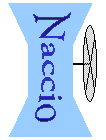
University of Virginia

|
Department of Computer
Science University of Virginia
Catenaccio |
An excerpt from:
Andy Gray with Jim Drewett. Flat Back Four: The Tactical Game. Macmillan Publishers Ltd, London, 1998.
The 1967 European Cup Final was just about the biggest clash of footballing styles you could even imagine. It was a meeting of two teams who inhabited opposite ends of the tactical spectrum. Jock Stein's Celtic played in the traditional Scottish way with two out-and-out wingers and a basic philosophy of all-out attack while Helenio Herrera's Inter Milan, the pioneers of catenaccio (the door bolt) defending, with four man markers and a sweeper, excelled at grinding out 1-0 wins.
For many this game was more than a battle for the European Cup, it was a kind of good v. evil contest with Celtic on some kind of crusade to save free-flowing attacking fooltball from extinction.
Inter's so-called catenaccio defensive system was feared and revered all over the footballing world. It had evolved from the first sweeper system, the brainchild of Austrian coach Karl Rappan, who introduced it when coach of the Swiss national team in the 1937/38 season. Concerned that whenever the opposition's centre forward managed to get past his centre half he was clean through on goal, Rappan withdrew one of the three strikers from the head of his "WM" formation and replaced him with an extra defender positioned in front of the goalkeeper.
Rappan christened his system the verrou or "door bolt" system and his extra defender the verrouller, and Swiss fortunes improved immediately. They beat England 2-1 in a friendly in May 1938 and a few weeks later knocked Germany out of the World Cup. Unlike later sweepers like Franz Beckenbauer or the Dutchman Ronald Koeman, Rappan's verrouller was entirely defensive, and it was this added security at the back which inspired Argentinian coach Helenio Herrera to develop a similar system when he became coach at Inter in the 1960s.
Herrera's system involved four defenders who were tight man-to-man markers. This meant that each defender was assigned to mark a particular attacker - and stuck to him like glue wherever he went to try and ensure he never had the space to pose a threat on goal. Playing behind these four man-markers for Inter was the sweeper. The ider was that he would pick up anything that came through the back four. Popping up here, there and everywhere he would sweep up wherever and whenever he was needed.
Naccio Home Page
University of Virginia, Computer Science